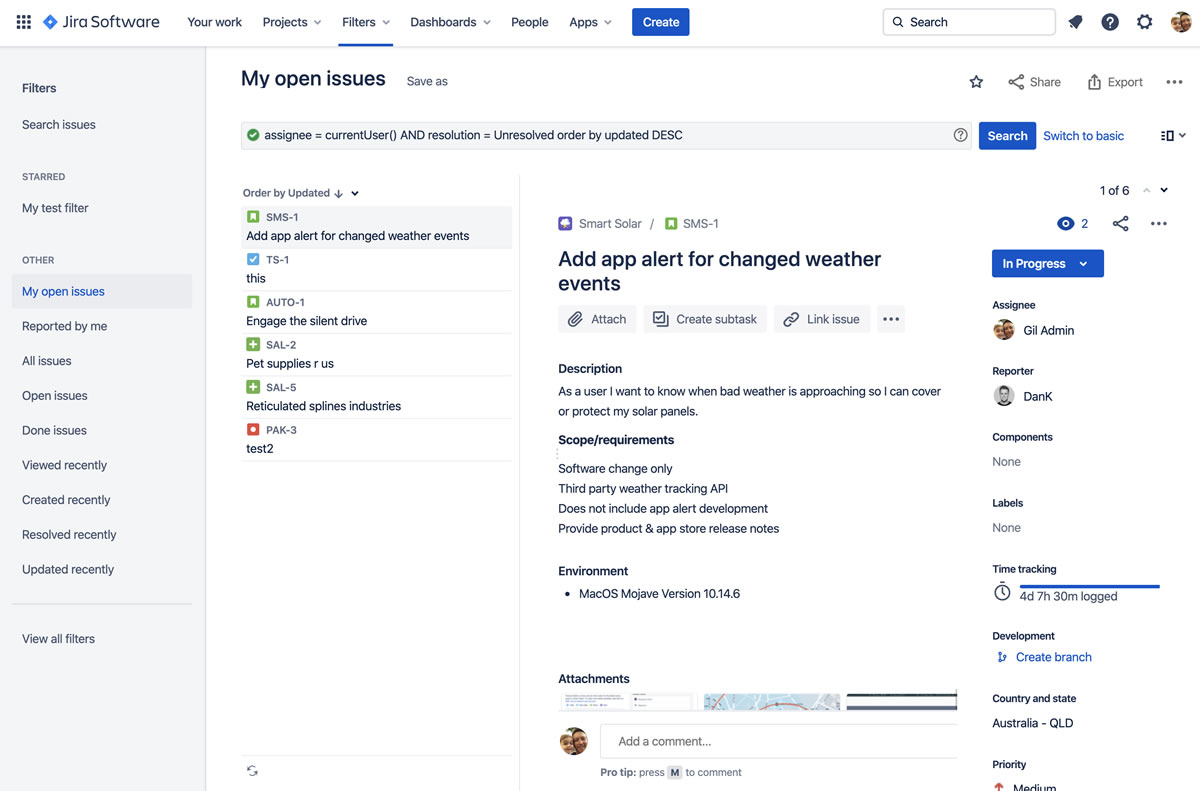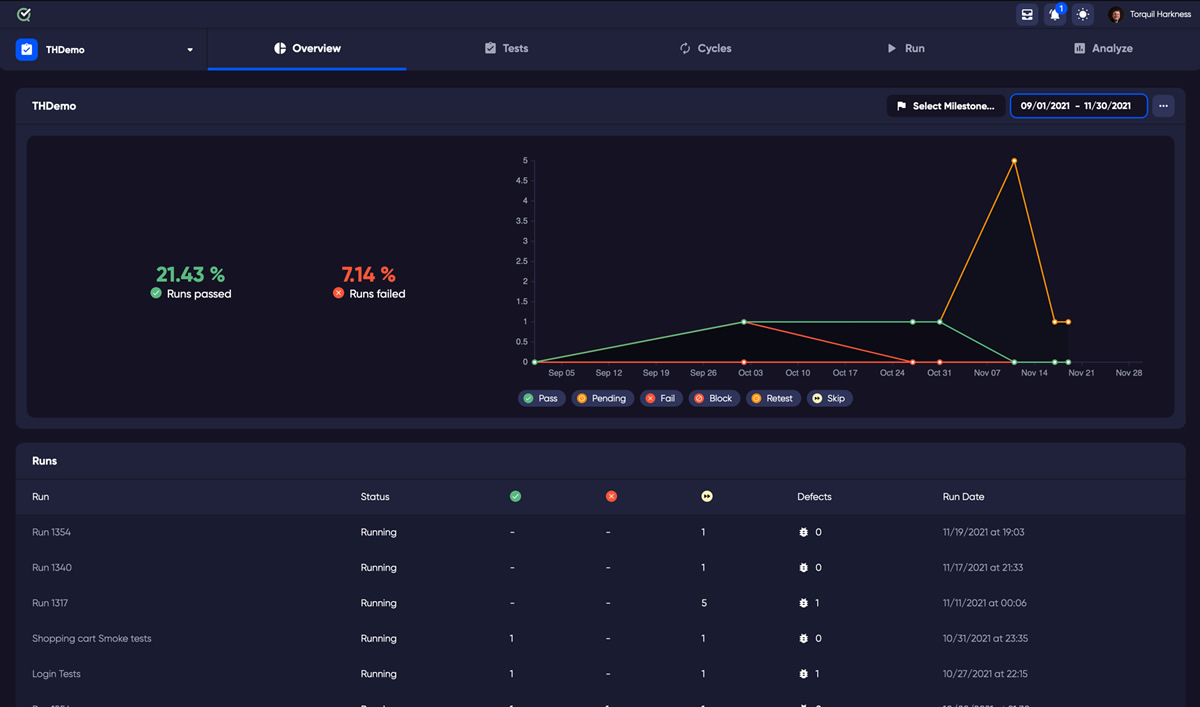There are important advantages of using Test Management Tools for an effetive product release, for locating and managing critical defects and for allowing you to focus on developing better software and a more efficient development process.
Having a platform to handle all rounds of testing is crucial, especially as more software developers use cycle methodologies like Test-Driven Development. In this post, we list and compare ten of the top test management solutions to aid in the organization of the whole test cycle.
Inadequate management or the use of the wrong test management tools might lead to problems. According to a National Institute of Standards and Technology (NIST) research, these issues cost the US economy between $22.2 and $59.5 billion each year.
But first, what exactly is a test management tool? Is it possible for a QA team to utilize Excel or Google spreadsheets instead of professional software? How can you select a dependable management solution that meets your project's requirements?

What exactly are test management tools, and why do you require them?
A test management tool is software that assists QA engineers in organizing test cases and test runs. Test tools make life easier for the whole QA department and development team.
Every team member may view the status of tests, their priority, tasks, who is accountable for what, and test reports. Test management software can update test cases automatically and eliminate data duplication. An structured testing approach helps to reduce release uncertainty, misunderstandings, and delays.
Some QA departments overlook test case management tools. They retain test cases in Google spreadsheets at best and Google docs at worst.
Such an approach has the potential to wreak havoc on the software testing process. QA engineers must manually alter the status of each test case and produce massive variations of the same documents. Furthermore, it is difficult to locate certain test parts in documents. Some development teams even used Skype to keep everyone up to date on the status of the testing process.
With such a siloed approach, all team members do not share the same perspective on the testing process.
Keeping test cases in one place improves the QA process. Your team will be able to track problems more quickly, understand what causes flaws in code, and how to solve or avoid them. As a consequence, there were fewer delays and a bug-free product.
Requirements and Key Features to Consider When Choosing Test Management Tools
Today, there are over fifty test management tools available. They all share comparable characteristics. However, some tools are more expensive than others, Choosing a test management tool is determined by the company's development strategy. If a corporation takes the Waterfall development strategy, it should use one sort of tool; if it takes the Agile software development approach, it should use another.
Taking the Agile development methodology perspective, we will discuss how to select a test management solution for Agile Software Development Life Cycle (SDLC).
What are the risks of incorrectly selecting test management software? the answer in essence is: you will lose the company's resources and time.
Before making a purchase, you should make research on tools and compare them. In the alternative, you can declare that you paid for an ineffective tool. For example, the tool contains superfluous functionality that are worthless for a project or alternatively – the tool lacks certain features required by the development team!
The good news is that practically all test management software include free trials.
We have followed the following criteria for selecting test management tools:
- UI/UX that is intuitive. The tool interface should be simple and easy to use for non-technical users.
- The price is reasonable in comparison to the functionality and quality of the test management tool. Some businesses overpay for their tools. To prevent spending money, compare and investigate tools with comparable functionality.
- Interoperability with different test tools. During testing, you will require more than one tool. QA engineers, for example, employ manual testing tools, automated testing tools, bug tracking systems, and so on. Consider using a tool that can communicate with other test tools to expedite the testing process.
- Application Programming Interface (API) avaliable for automation testing.
- Project specifications and requirements. Each customer defines distinct project needs.
Test Management Tools
The main objective of test management tools are to create test runs, test reports with testing statuses, and to manage the entire testing process. In many circumstances, the selection of test management software is dictated by the project budget. The Top Test management solutions, are listed below.
JIRA
Jira is one of the most widely used and user-friendly test case management software. Because it is so versatile and agile, the technology is ideal for Agile development. In truth, the goal of Jira is not to manage testing. Jira was created to track bugs. However, the program now has tremendous features and assists teams in organizing various forms of work.

Search and Filtering Issues in Jira Source: Jira
The Jira work premise is simple. QA engineers enter detected issues into the tool, create a description and methods to reproduce them, assign team members, and update the status. Tracking progress is possible for all team members who have access to the board.
- Jira offers a free subscription for up to 10 users.
There are a variety of test management tools and plugins available to help and assist test management in Jira. Here's a list of some of them.
Apps for JIRA
Zephyr (Scale/Squad)
Zephyr for Jira is the most widely used Jira test management tool. The software is designed specifically for Agile teams. Zephyr allows you to develop, perform, and track tests from within Jira. You may also define test cycles and associate them with tests.

Managing test cases from a Jira Issue with Zephyr. Source: SmartBear
The tool is suitable for automation. Zephyr can be integrated with CI/CD technologies like Bamboo and Jenkins, as well as automation tools. In addition, your team may create a REST API to create your own integrations.
- Zephyr Squad/Scale is $10/month in cloud for 10 users. It offers a Free Trial
Xray
Zephyr's good alternative is Xray. It's a native cloud software that works in tandem with Jira. You have complete control over your test. You can develop, perform, manage, and report on tests.

Progress of your test executions or test plans with progress bars. Source Xray
Both manual and automated testing are supported by Xray. The app works well with automation and continuous integration systems.
- Xray is available for free for 30 days. You need to get a quote to know the pricing.
Requirements and Test Management for Jira (RTM)
Another test management program that connects with Jira is RTM. The software was created specifically for Agile teams.

Design test plans from test cases. Source: Hexigen
According to Hexigen, the app's creators, RTM distinguishes itself from competitors by a user-friendly design and comprehensive test management tools. The software includes all of the required test management functions, including test design, execution, tracking, and reporting.
Furthermore, RTM offers a vital feature that its competitors lack - requirements. The "Requirements" functionality enables QA engineers to develop and manage product quality requirements. You may, for example, define test scenarios and associate them with certain quality standards.
- RTM is free for the first 30 days for team of all sizes. Pricing $800/year up to 50 users.
TestFLO for JIRA
TestFLO is the most adaptable Jira native app. Even in highly controlled workplaces, the app is appropriate.

Test case issue. Source TestFLO
TestFLO allows you a great deal of customisation. It makes the solution ideal for businesses with both a streamlined and complicated QA procedure. QA experts may also import test cases from other test management technologies into TestFlo.
- You can try a 30-day free trial for team of all sizes. Pricing $750/year up to 50 users.
Alternatives for JIRA
TestQuality
TestQuality has all the test management capabilities you need for creating, maintaining, organizing, and running tests, but TestQuality is different from other test management tools in that it is a test management built for GitHub and Jira workflows and designed to be integrated with virtually all test automation and unit testing tools. Put simply, TestQuality is the first test management system designed to integrate into your DevOps workflow and tools.

An overview of your Test Run result to monitor logged defects/bugs over time.
TestQuality is designed around a live integration core. This live two-way core allows TQ to communicate directly with GitHub and Jira in real-time linking issues and requirements with the key tools in your DevOps workflows. Join now and Try TestQuality for Free!

Test run overview showing test run details and status.
All this, in a collaborative testing environment seamlessly integrated with your DevOps workflow with powerful live analytics to help you to identify the quality of your testing effort, test coverage, high value tests, unreliable tests, and release readiness.

With TestQuality you can measure your test growth over time. How many tests you have and what is the breakdown of those tests, automated or manual.
TestQuality's import capabilities also allow you to import requirements, tests, and issues from Google Drive or Excel with ease, or script TestQuality REST API to import test sets from other testing tools but also, TestQuality's integration engine also allows you to connect to pull in automated test results from popular CI/CD, Test Automation, and Unit Testing systems.

Fast and easy GitHub and Jira Live Integration Set-up
- Pricing for TestQuality is simple, FREE forever (0$ per month) including: Visual Test Plan Builder, Test Case Builder, Test Cycles, Story Linking and you can publish and share Test Plans & Cases.
The commercial TestQuality plans starts at only $9 per user/mo with 10 users included (or $90 a month). 15 days Trial.

TestRail
Testers and QA's preferred JIRA alternative is TestRail. It's a web-based test case management solution with a simple and user-friendly design. From a single location, you can write, perform, and manage tests.
TestRail integrates with technologies used in the CD/CI/DevOps pipeline. The QA team may set up process and link TestRail to Jira. As a consequence, all team members can keep track of updates and results.

Results of test runs in TestRail. Source: TestRail
Users of TestRail commented on how simple it is to reuse test cases and tie them to multiple milestones.
- TestRail provides a 14-day free trial. Pricing starts at $34/mo. per user (Professional Cloud) and $69/mo. per user (Enterprise Cloud).
Qmetry
QMetry Test Management is a test management software that enables users to develop, monitor, and execute tests all from a single application. Following the execution of tests, you may observe additional metrics such as if the test passed or failed. You may also import test suites from third-party programs.
You may monitor testing in real time using the dashboard. Individual users can personalize the dashboard to present an overview of the information most relevant to their function. Analytics and visualization features assist to identify any patterns that you should be aware of.

Alike test prediction. Source: QMetry
- You need to contact QMetry to get the price for either version. It offers a 15-day free trial.
Practitest
PractiTest is a SaaS-based end-to-end QA management tool that enables the QA team to track testing in real time. PractiTest includes an easy-to-use interface that aids in the training of new users. You may see test reports and share them with stakeholders and team members immediately. This instrument is distinguished by hierarchical filter trees that aid in workflow organization.
PractiTest is a Jira test management application that allows you to manage, display, and update Jira problems or user stories, as well as produce issues back into Jira.

Test run status overview. Source Practitest.
- Pricing for PractiTest starts at $39/user/month
Test Collab
Test Collab is a software testing management application that assists teams in managing their quality assurance operations. You may use Test Collab to create templates for test cycles as well as adjust and save search filters. The technology facilitates team cooperation by providing notifications and "@" mentions.
Test Collab automatically pushes new issues in your issue manager when a test is failed, it also offers a bi-directional integration to create and manage test cases directly from issue manager. Bi-directional is currently available for Jira, and Redmine

Test runs results in Test Collab. Source: Test Collab
The tool integrates with JIRA, allowing bugs to be automatically reported in JIRA. In addition, TestCollab has a distinct Jira page that makes it easier to identify reported problems.
- Test Collab has three plans: Free (with a limit of 200 Test Cases and 300 Test Runs, Basic for $17 with unlimited Test Cases and Runs, and a Premium for $29/user/month including the Jira Bi-directional Plugin.
aqua
aqua is an easy-to-use test management system that helps tech teams in regulated, manufacturing, medical and banking industries. aqua is a best choice for tech leaders in software agencies and SaaS companies to organize tests and teams.
You can easily integrate aqua with all your favorite tools: Jira, PowerShell, Jenkins, UFT and many others.

Simple or complex workflow, beginner or a pro - with aqua you get a better and fully automated testing process.
Conclusion
Remember that Jira is an issue tracking software that manages agile projects and tracks issues. However, with the help of third-party add-ons, we may continue to utilize JIRA as a test case management platform
All of the test management tools mentioned above have their own distinct capabilities that will provide your QA team with the benefits it needs to simplify its test cases.
We recommend that you thoroughly analyze the benefits and drawbacks of each testing solution before deciding which one is best suited to your needs. You always may try it for free when possible and find the best tool that meets your team needs.





